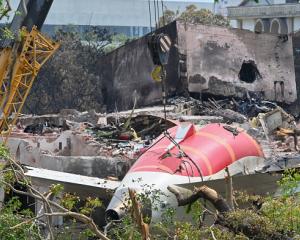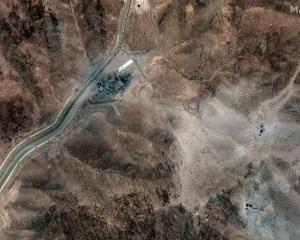For the first time, two women are now free to whack each other with swords until one of them falls down in internationally sanctioned competition. This is progress.
The first such combat took place last week in Belmonte, a small town in Spain with a 15th-century castle, about 140km east of Madrid. Sixteen countries in Europe, the United States, Japan and New Zealand sent teams. Some 10,000 people showed up to watch.
"We made history for all the women in the world," longsword runner-up Aline Planchon, of Belgium, said after hugging her winning opponent, Suzanne Elleraas, of the United States.
Medieval combat as an amateur sport has been gaining in popularity since it began in Eastern Europe some 15 years ago, according to the International Medieval Combat Federation, or IMCF, which sponsored the event in Belmonte. It sets rules and and specifications, such as the length of a longsword (115 cm, or 45 inches).
The IMCF says it is the world governing body for "full contact medieval combat", a revival of "medieval foot-based tournament fighting", not to be confused with medieval re-enactments or jousting. The combat features fighters wearing up to 30 kg (66 lb) of armour colliding on the battlefield.
Another group, the Historical Medieval Battle International Association, says it runs an annual event called the "Battle of the Nations" which it describes as "the world championship" and which will be held in Croatia in June.
In Belmonte, the United States took gold in all three individual women's categories - longsword, sword and shield and polearm - and in the men's polearm competition. The US also dominated the competition among teams of three, five and 16 players. Poland took the top medal in men's sword and shield and longsword.
"It's one of the most awesome things you can ever do, go out and fight like this," said Jesper, a Danish knight who did not give his family name. "It is major awesome."
The equipment used by competitors is hand-made. The weapons look menacing, but regulations require that edges be rounded. A polearm, incidentally, is a weapon with a blade or a point or both, mounted on a staff that's usually at least six feet long.
"This sport is the best sport in the world. You've got adrenaline, you have men trying to hit each other," said Jay Brooks, a competitor from the US state of New Hampshire.
"It's the most violent thing men can do with each other without really hurting each other. Our ancestors, if they looked at us, they would see it and say 'This is what we did'."
Despite the violent nature of the event, organisers say the injuries are about the same as those in other contact sports. The beatings are brutal in medieval combat, but the armour is also heavy and protective, competitors say.
"Fair play is a big part of this sport. I always find it interesting that everybody thinks it's an incredibly violent sport," Martin Casey, a British participant, said.
"To a certain extent it is, but it's all taken out on the field and as soon as the fight is over we help each other up off the ground, we give each other a hug and go and buy a beer for each other."














